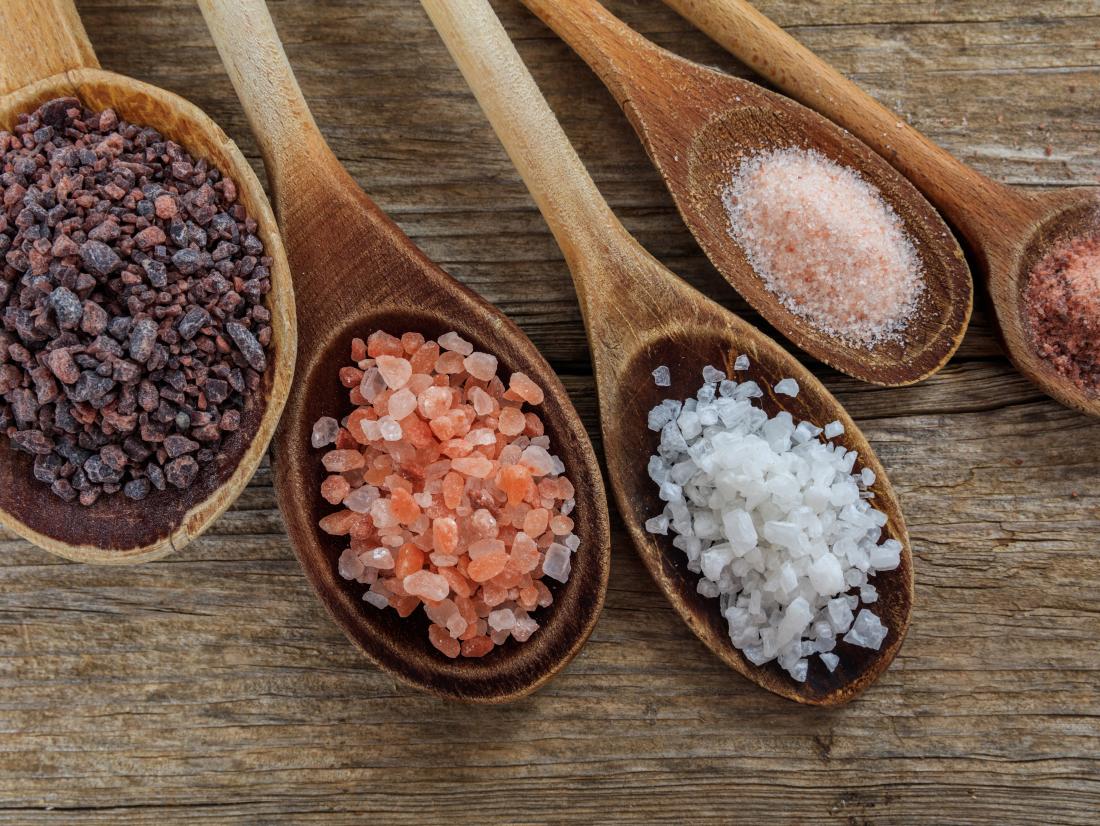Many people believe that sea salt is healthier than table salt because it is a natural source of sodium. Manufacturing strips table salt of other nutrients, such as magnesium, calcium, and potassium. However, producers fortify table salt with iodine, which is vital for thyroid hormone production.
Sodium is an essential nutrient that people get from added salt and processed foods. Doctors recommend limiting salt in the diet because too much sodium can contribute to dehydration and heart disease. High blood pressure is a significant concern.
In this article, we explore the differences between sea salt and table salt, the health benefits of salt, and which type is healthier. We also discuss how much salt we should have per day.
Table salt vs. sea salt
It is a misconception that sea salt contains less sodium than table salt.
Many people perceive sea salt as a healthful alternative to table salt.
Sea salt comes from evaporating seawater, so it is a natural source of sodium. Table salt comes from mining salt deposits. Manufacturers then process it into a fine crystal that is easy to mix in food.
Chefs use sea salt in some recipes because of its coarse and crunchy texture. Some people also prefer the stronger taste of sea salt.
Although people may perceive sea salt to be better for health, it has the same sodium content as table salt. Some people believe that sea salt has less sodium than table salt, but this is a misconception.
Table salt and most sea salts both contain 40% sodium by weight.
A teaspoon of table salt has 2,300 milligrams (mg) of sodium. The crystals of sea salt are larger, so fewer crystals can fit in 1 teaspoon.
Since less sea salt can fit in the same volume, people may believe sea salt has less sodium than table salt.
Sea salt comes from a natural source and contains other minerals, including:
- magnesium
- calcium
- potassium
Table salt does not have these additional nutrients, but it does contain iodine if fortified.
Benefits
Sodium is essential for good health, so people should not eliminate it entirely from their diet. The sodium in salt helps to control blood pressure and is necessary for nerve and muscle function. People need to eat salt for normal cell function and to maintain the acid balance of the blood.
Table salt contains iodine, which is another essential nutrient. People with iodine deficiency can develop goiter and a range of other symptoms. Learn about the signs and symptoms of an iodine deficiency here.
A lack of iodine can also cause poor growth and cognitive disorders in children. Iodine deficiencies are rare in the United States, since many products, including table salt, contain added iodine.
However, the risk of low iodine may be higher in Europe and other regions of the world and in people who do not eat dairy, baked goods, or table salt.
Of the two, only table salt contains iodine, as unprocessed sea salt does not contain iodine.
As this article stated earlier, although sea salt does not have iodine, it naturally contains magnesium, calcium, potassium, and other nutrients.
The amount of these minerals found in sea salt are minimal, and people can get them in more significant amounts from other healthful foods.
Health risks
Too much salt can contribute to several health conditions, including:
Despite this fact, people need the correct amount of salt in their diet to maintain good health.
According to the Dietary Guidelines for Americans, the average amount of sodium in the American diet is about 3,440 mg per day, which is much too high. The American Health Association (AHA) recommend eating less than half of this quantity, or 1,500 mg per day.
When people reduce the amount of sodium in their diet, they reduce their risk of developing heart disease and high blood pressure. Countries in the World Health Organization (WHO) have agreed to help reduce the global population’s sodium intake by 30% by 2025.
The majority of salt people eat does not come from adding salt to their home cooked meals, however. Instead, the AHA state that more than 75% of the sodium in people’s diets comes from processed foods.
In addition to processed and packaged foods, people should be aware of the high salt content in poultry, cheese, and bread.
Manufacturers may include additives in table salt to prevent clumping. These additives are called anticaking agents and may include:
- potassium ferrocyanide
- calcium silicate
- silicon dioxide
- yellow prussiate of soda
- iron ammonium citrate
The Food and Drug Administration (FDA) have said these additives are safe to use in salt to prevent clumping.
Intake recommendations

A person should aim to consume less than 1,500 mg of salt per day.
The AHA recommend that people should aim to reduce their salt intake to less than 1,500 mg per day.
The Dietary Guidelines for people in the U.S., however, suggest limiting sodium in the diet to less than 2,300 mg per day for adults and children over 14 years old.
The maximum amount of sodium children under 14 years old should have depends on their sex and age.
Summary
Just because sea salt is natural, does not mean it is better for people’s health. Many people believe that sea salt is a healthful alternative to table salt, but eating too much of any salt is harmful.
People do need to include an appropriate amount of sodium in their diet, however. Eliminating salt can cause harmful mineral imbalances in the blood and can affect thyroid function.
Sea salt comes from a natural source and contains other minerals, but it does not contain iodine. Choosing nonionized sea salt can put people at risk of iodine deficiency, and so they must seek other sources of iodine in their diets.
One type of salt may not be more healthful than another so people can choose their preferred salt, depending on taste and texture.
